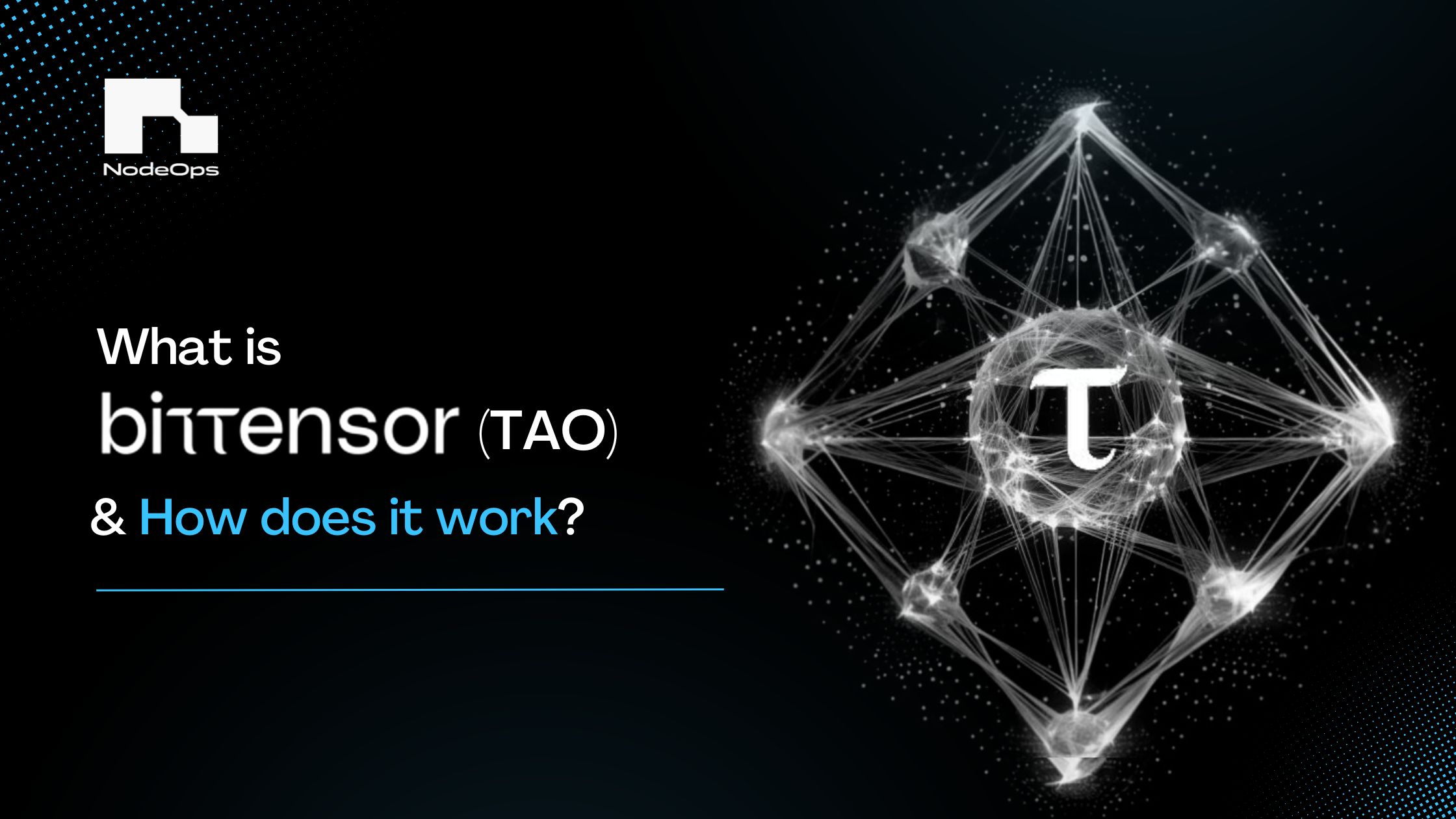Thanks for reading NodeOps! Subscribe for free to receive new posts and support my work.
Bittensor is often compared to the human brain, where each 'neuron' represents a machine-learning model owned by different people around the world. It is similar to how neurons in the brain work together to facilitate thinking and decision-making.
But why is that? To help you understand this unique yet fascinating technology, let’s walk you through the in-depth details, exploring what Bittensor is, how the Bittensor protocol works, its network architecture and the Bittensor compute subnet miner.
What is Bittensor
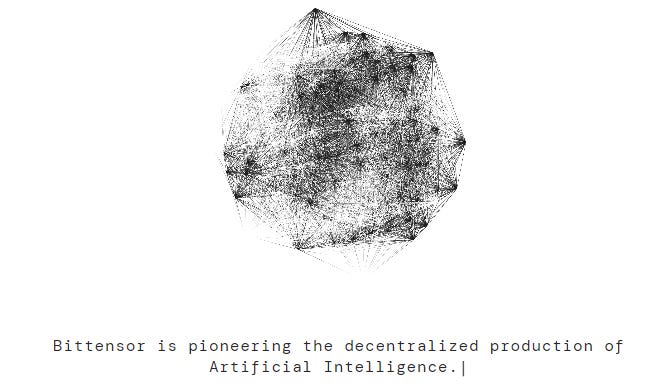
Source | Bittensor Homepage
Technically speaking, Bittensor is a mining network similar to Bitcoin. Except it provides censorship-resistant access to a decentralized network of machine-learning models instead of financial solutions. Using digital incentives to reward participants for their contributions to computational resources, expertise, and innovation establishes Bittensor as an open-source ecosystem of artificial intelligence competencies.
In short: Bittensor is driving ML innovation through distributed networks and incentivizing collaboration. Its protocol transforms machine intelligence into a tradable commodity, encouraging innovation from a diverse global developer community.
A quick overview:
Features
Details
Platform
Bittersor is a decentralized protocol for AI and ML model development.
Mission
The goal is to make AI accessible to everyone and establish a worldwide open-source neural network.
Decentralization
The goal is to decentralize AI by moving away from corporate monopolies.
TAO Token
The token is used for rewarding, staking, governance, and making payments within the network.
TAO
Bittensor's native currency, TAO, serves as both a reward and access token to the network. However, TAO's value extends beyond mere currency, as it represents the collective intelligence and insights contained within the network and has multiple functions.
Rewards: Incentivizes miners for tasks and computational power sharing.
Staking: To become a validator, participants must stake TAO first, which is a form of collateral to encourage honest behavior. Another form of staking is delegation, in which TAO holders delegate tokens to a subnet validator to earn rewards.
Governance: Allows holders to propose and vote on protocol upgrades.
Fees and Payments: Used for transaction fees, smart contract execution, and accessing Bittensor's machine learning services.
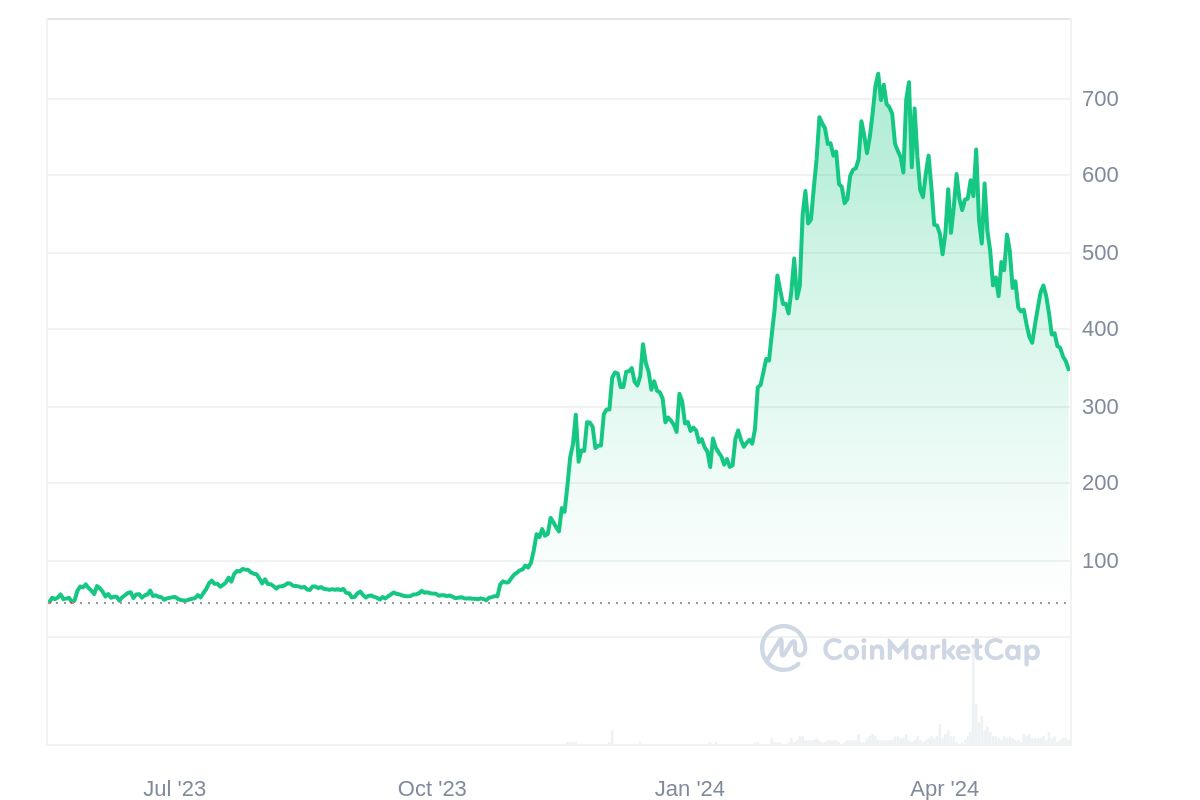
Source: The growth of TAO over the year
Bittensor's architectural blueprint draws inspiration from the intricate workings of the human brain's cognitive processes. At its core, Bittensor comprises computational units called "Neurons," each encompassing three pivotal components:
a model,
a dataset, and
a loss function.
These neurons operate collaboratively to optimize their individual loss functions by harnessing input data and facilitating inter-neuronal communication.
The communication mechanism between Bittensor neurons mirrors the intricate neural connections found in biological neural networks. Each Neuron possesses an axon terminal to receive inputs from other neurons and a dendrite terminal to transmit inputs to neighboring neurons.
During the training phase, a Bittensor neuron undertakes a dual role: it dispatches a batch of inputs from its dataset to neighboring neurons while concurrently processing the same batch through its internal model. Upon reception, the neighboring neurons process the input using their respective local models and convey the output back to the originating neuron.
The originating neuron then consolidates these outputs and updates its gradients by factoring in the loss incurred by the remote neurons and its own local loss. This cooperative learning process engenders an intelligent and interconnected network of neurons, mirroring the cognitive processes observed in biological neural networks.
How does the Bittensor protocol work?
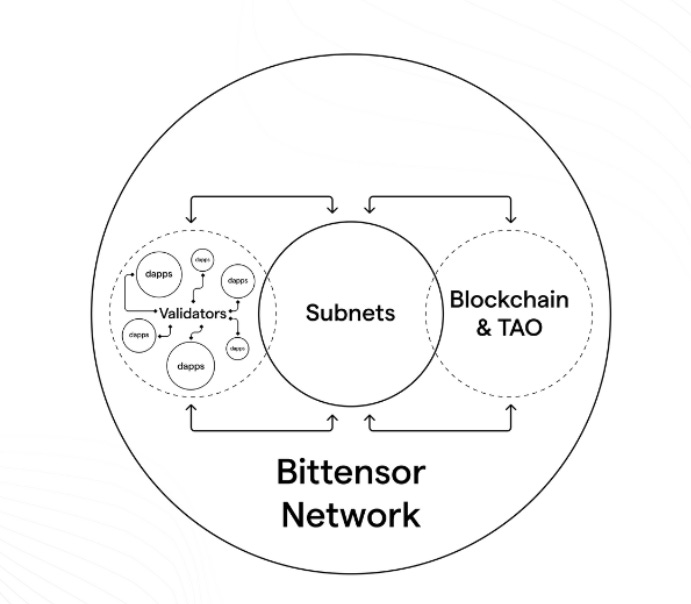
Source: Open-source decentralized protocol, blockchain-based machine learning network
Let’s take a quick glance at how the Bittensor protocol works:
Network Architecture
The Bittensor network comprises nodes, often referred to as miners, actively engaging in the protocol. Each node operates Bittensor client software, facilitating communication with other network nodes.
Registration
The protocol operates through a registration process involving a hotkey's registration. To participate and mine Tao tokens, users are required to register a hotkey by either solving a proof of work or paying a fee using the recycle_register method.
Subtensor
After registration, a node integrates into a subnet, a distinct domain or topic within the Bittensor network. Each subnet has its own set of registered nodes and corresponding machine-learning models.
Validators
Validators hold a pivotal position within the Bittensor network, responsible for authenticating the responses and forecasts furnished by the miners. Their primary function revolves around upholding the integrity and excellence of the data and models shared across the network. By scrutinizing miners' outputs, validators gauge the precision and trustworthiness of their predictions.
Validators function as essential intermediaries and gateways to the Bittensor network, easing interaction and offering a user-friendly interface for users and applications.
Mining
In this hive-minded network, miners offer machine-learning services by hosting and locally serving their machine-learning models. When a client application needs a prediction, it sends a request to the Bittensor network.
The network then directs the request to a miner designated as a provider for the specific service needed. The miner handles the request using its locally hosted machine learning model and sends the prediction back to the client through the Bittensor network.
Consensus
Consensus algorithms establish a unified understanding of the network's status and uphold the integrity of processed data. These mechanisms are pivotal in averting issues such as double-spending, ensuring data coherence, and upholding the network's security as a whole.
Incentive
The Bittensor network is powered by a token-based economy, offering incentives to participants for their contributions. Whether through providing computational resources or accurate predictions, miners and validators are rewarded with tokens. These incentives foster active engagement and uphold the network's stability and efficiency, making the Bittensor protocol stand out for its incentivization mechanism.
Bittensor compute subnet miner
Bittensor’s Layer-0, subnet 27, is a permissionless compute market for platform-composable cloud services. It integrates various cloud platforms into a cohesive unit to enable seamless compute composability across different underlying platforms. This subnet allows nodes to contribute computational power, with validators ensuring the integrity and efficiency of shared resources, empowering the Bittensor ecosystem and cloud computing as a whole. Subnet 27 allows miners to contribute computing resources and earn $TAO.
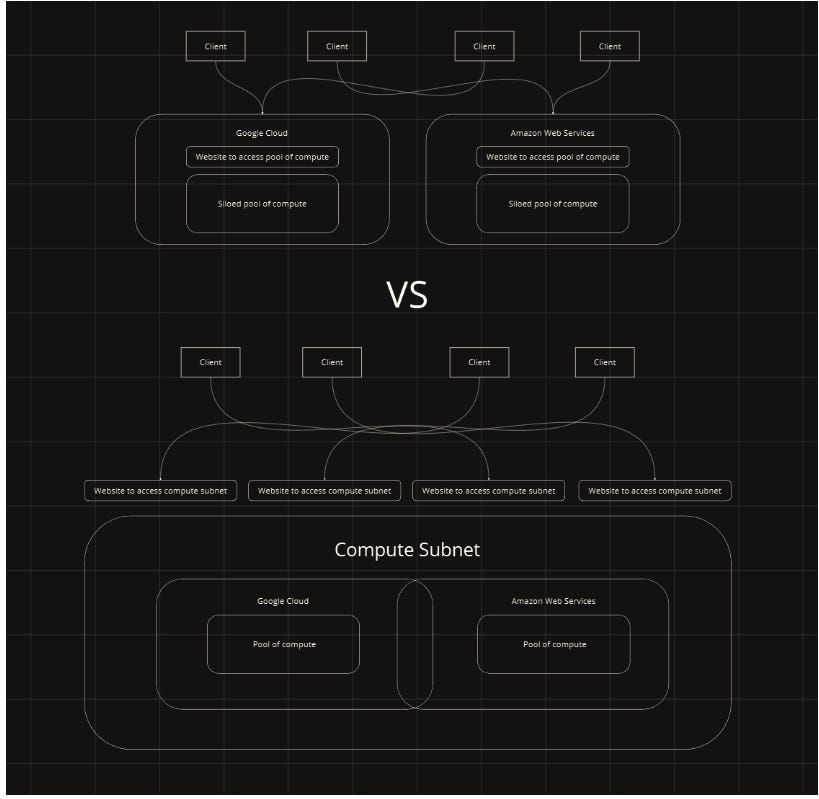
Source: Bittensor compute subnet
Miner Overview
Miners contribute processing resources, such as GPU and CPU instances, to enhance performance in essential computing tasks based on GPU and CPU.
Performance-Based Mining
The system operates on a performance-based reward mechanism, where miners are incentivized through a dynamic reward structure correlated to the processing capability of their hardware. High-performance devices are eligible for increased compensation, reflecting their greater contribution to the network's computational throughput. Emphasizing the integration of GPU instances is critical due to their superior computational power, particularly in tasks regarding machine learning.
Consequently, miners utilizing GPU instances are positioned to receive substantially higher rewards compared to their CPU counterparts, in alignment with the greater processing power and efficiency GPUs bring to the network.
NodeOps venturing into the Bittensor ecosystem
NodeOps collaboration with subnets, starting with the launch of Neural Internet, the first subnet to go live, signals a significant step into the Bittensor ecosystem. By leveraging the Bittensor, this partnership aims to reshape the future of AI development and accessibility worldwide.
With more subnets expected to join in, this venture promises an optimistic future of decentralized and democratized AI, offering ample opportunities for innovation and collaboration.
NodeOps is the only node operator supporting almost all of the recent node infrastructures that raised more than 125 million via their Node Sales, including XAI, HyChain, Avail, Zora, and more- with over 17,000 nodes powered by us in the last quarter alone. We currently support over 20 chains and deliver single-stop node deployment solutions for node infrastructures and relevant communities.
Join NodeOps today and try out one-click node deployment across our supported protocols. Further, for protocol updates, follow NodeOps on X!

